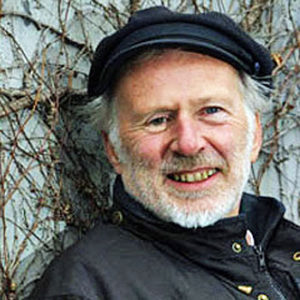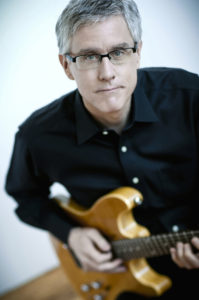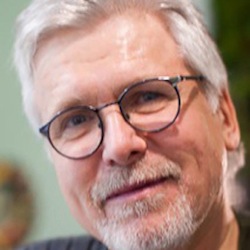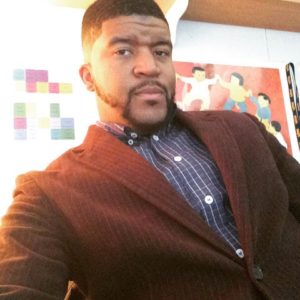April 2017 Discussion of the Month
For the next several months, this feature of the website will reprint the collection of short articles that first appeared 10 years ago in Ecclectica. The collection was edited by Wayne Bowman, and published online by Brandon University; this particular issue explored the topic, “The Future of Music Study in Canada.” Contributing authors to this collection represent a diverse range of music scholarship and interests. The MayDay Group obtained permission to reprint these articles from Ecclectica and the various authors for the purpose of discussing the ways music in higher ed has changed since these articles were written ten years ago. The original publication may be viewed at http://ecclectica.brandonu.ca/issues/2006/2/Read.ecc.asp This month’s article from the above collection is by R. Murray Shafer and is the 13th installment from Ecclectica to be featured on the MayDay Group website: Discussion of the Month.
Our hope is that as you read, you will think about what has changed in the past ten years, what may not have changed at all or very much, and where there are signs of shifts in both thinking and practice. While the Ecclectica issue dealt primarily with music in higher education in Canada, the issues, we believe are common to higher music studies in other parts of the world, and this reprint seems timely given the 2014 report from the College Music Society calling for sweeping changes in the approach to undergraduate education in music. Please take a moment after you read to share your thoughts, so that we may generate the kinds of discussions that will lead to the kinds of changes the original Ecclectica authors call for.
Humility, Creativity, and the Music of the Future
R. Murray Schafer, Composer, Educator
 I have no idea how the world should be educated. Each culture has its own targets for citizenship and develops a curriculum to meet those objectives. Those who disagree with the objectives will have a rough time in school. I spent years in school trying to get out. It seemed to me that too much time was devoted to answering questions that no one had asked while the real questions slid by unanswered. Plato taught that there was an answer to every question. Socrates taught that there was a question to every answer, but that was something my teachers didn’t seem to want to deal with. For that reason I never completed my education but set out to travel the world and educate myself. Unfortunately, as Ivan Illich pointed out, the effect of universal education is to make the autodidact unemployable.
I have no idea how the world should be educated. Each culture has its own targets for citizenship and develops a curriculum to meet those objectives. Those who disagree with the objectives will have a rough time in school. I spent years in school trying to get out. It seemed to me that too much time was devoted to answering questions that no one had asked while the real questions slid by unanswered. Plato taught that there was an answer to every question. Socrates taught that there was a question to every answer, but that was something my teachers didn’t seem to want to deal with. For that reason I never completed my education but set out to travel the world and educate myself. Unfortunately, as Ivan Illich pointed out, the effect of universal education is to make the autodidact unemployable.
It was only after many years of traveling, first as a sailor, then a journalist, a broadcaster and a composer that I began to question seriously why my life at school had been so futile. The failure of the music program concerned me in particular because I had musical talent (I played piano and sang in a choir) and had eventually adopted music as my vocation.
When the Canadian Music Centre initiated its John Adaskin Music Program, in which composers were invited to visit schools to work with children and young people, I was one of the first to apply. After visiting several schools, I could see clearly what was missing: creativity. In art classes original paintings were produced and in literature classes original stories and poems were written, but the music scene was dominated by the concert band or the jazz band playing classical arrangements of music that wasn’t even written in Canada let alone in the school.
There was during this period (the 1960s) a wave of activity internationally that was encouraging creativity in music education in music education. The Manhattanville Music Curriculum Project was active in the United States and in England composers like John Paynter, George Self and Peter Maxwell Davies had penetrated classrooms and were writing music for and with young musicians. I shared their ideas and wrote a series of little books about my own experiences. The books were descriptive, not prescriptive. You can’t tell people how to become creative but you can reveal the excitement of creative activity and hope that it may encourage them to try something on their own. Allowing people to become creative does not require genius; it requires humility.
Above my desk I wrote some maxims to keep myself in line:
The first practical step in any educational reform is to take it.
In education, failures are more important than successes. There is nothing so dismal as a success story.
Teach on the verge of peril.
There are no more teachers. There is just a community of learners.
Do not design a philosophy of education for others. Design one for yourself. A few others may wish to share it with you.
For the 5-year-old, art is life and life is art. For the 6-year-old, life is life and art is art. The first year in school is a watershed in the child’s history: a trauma.
The old approach: Teacher has information; student has empty head. Teacher’s objective: to push information into student’s empty head. Observation: at outset teacher is a fathead; at conclusion student is a fathead.
On the contrary a class should be an hour of a thousand discoveries. For this to happen, the teacher and the student should first discover one another.
Why is it that the only people who never matriculate from their own courses are teachers?
Always teach provisionally: only God knows for sure.
At the time of these thoughts and activities (1970s), it seemed that a revolution was just around the corner, but it didn’t happen. Instead music education programs in Canada and the USA pioneered backwards. My own work in music education moved into other countries and cultures: South America and Japan. In South America there was no money for music so teachers had to use their imaginations. “Tomorrow I want each of you to bring an interesting sound to class,” I would say, and the next day a whole flood of sound and noise-makers would fill the room. This became our orchestra and we could produce free improvisations or create rondos and fugues with what we had just as with violins and clarinets – better probably, because we were unconcerned about the safety of expensive instruments.
In Japan the word for music is ongaku, and it means simply “beautiful sounds”. Not only music but the singing of birds, the splashing of water and the chirping of crickets can be ongaku, which opens the subject out to include the soundscape, giving our ears a completely new field to investigate.
Sometimes I think that music programs in Canada are crippled by affluence. How many times have I entered a classroom and the proud teacher points out all the instruments lined up against the wall, the loudspeakers, the amplifiers, the CD players… But the problem with flutes and trumpets and violins is that all you can do is to learn how to play them, and that takes years. A very expensive music education program has been erected in the form of a triangle in which the base line is all those enrolled in the program and the apex is the professional performer/teacher, or, in a very few cases, the genius who will make the school famous.
“Show Uncle Murray your flute,” my brother’s wife said to her daughter, just entering high school. She brought it out and took it out of the box. “Can you play it?” I asked. “Not yet.” And she left the music program a year later. Too many people have been fooled into believing that if it is expensive, the music program must be good. Those who don’t learn to master those expensive tools will slip down to the category of consumers to help the recording industries get richer. That, I think, is the problem music education faces in Canada today.
Can we learn to do more with less? I think so, and there are many people in various countries who are demonstrating how this might be accomplished through new approaches to music making, music teaching, and music learning.
In one of my little pieces for young players (Minimusic), I included this line: “MUSIC IS NOT TO BE LISTENED TO. MUSIC IS LISTENING TO US.” That is, the perfect world is listening to the imperfect world and is inviting us to go further, delve deeper and reach higher in creating the music of the future.


 Trend and Trade? Some Thoughts on Future Music Studies in Canada
Trend and Trade? Some Thoughts on Future Music Studies in Canada





 Join the discussion on Twitter using #MDGdiscussion
Join the discussion on Twitter using #MDGdiscussion 